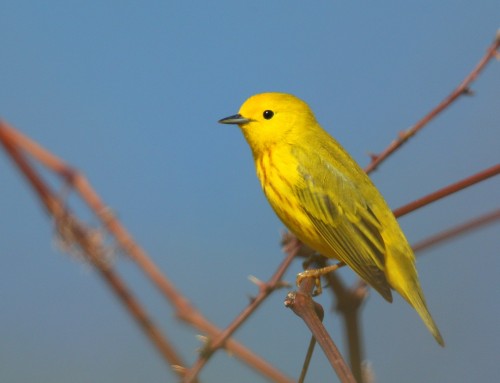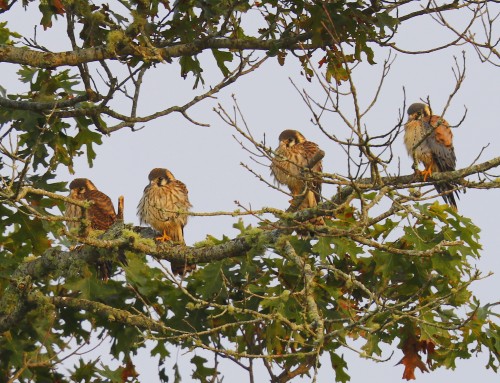Yellow-rumped warblers forage in Falmouth during fall migration by gleaning insects from leaves and tree bark, consuming seasonal berries, and forming mixed foraging flocks with other songbirds. They maximize energy intake to fuel their long journey south. This warbler was recently along the Shining Sea Bikeway near Oyster Pond.
Yellow-rumped warblers (Setophaga coronata), also known as “butter-butts” due to their distinctive yellow rump, are migratory songbirds that can be found in New England during their fall migration stopovers. These birds have diverse foraging habits that help them prepare for their long journey south for the winter. Here’s a description of their foraging habits at fall migration stopover locations on Cape Cod:
- Insect Predation: Yellow-rumped warblers are primarily insectivores. During their stopover on Cape Cod, they forage for insects and invertebrates, such as beetles, caterpillars, moths, and spiders. They glean insects from leaves, branches, and tree bark, often in a methodical and deliberate manner. Their specialized foraging techniques allow them to extract hidden insects from crevices and foliage.
- Fruits and Berries: Yellow-rumped warblers have a unique advantage among warblers because they can digest both insects and fruits. In the fall, they shift their diet to include various fruits and berries that are abundant in New England during this season. They feed on fruits such as bayberries, dogwood berries, and juniper berries. This dietary flexibility helps them build up fat reserves for their migration.
- Tree Canopy Foraging: These warblers are skilled in navigating the forest canopy. They hop and flutter between branches, inspecting leaves and twigs for potential prey. Their agile behavior allows them to cover a wide area while foraging.
- Gleaning and Hover-Gleaning: Yellow-rumped warblers use a technique called “gleaning” to forage for insects. They carefully search for small arthropods on leaves and twigs. They may also engage in “hover-gleaning” when catching insects mid-air by hovering briefly and then snatching their prey.
- Mixed-Flock Associations: In fall migration stopovers, these warblers often form mixed foraging flocks with other warbler species and small songbirds. They join these flocks to increase their chances of locating food. Safety in numbers helps protect them from potential predators.
- Water Sources: While foraging, yellow-rumped warblers may also visit water sources like streams and ponds. They drink and may capture aquatic insects or larvae found in these areas.
- Migrant Fueling: Fall migration is a critical time for these birds. They need to build up fat reserves to sustain them during the long flight to their wintering grounds in the southern United States, Central America, and the Caribbean. Foraging is therefore especially intense during their stopover in New England, as they aim to accumulate the energy needed for their journey.
Yellow-rumped warblers are resourceful and adaptable when it comes to their foraging habits. They take advantage of the available food sources, including both insects and fruits, during their brief stopovers on Cape Cod, ensuring they are well-prepared for their continued migration.







Leave A Comment
You must be logged in to post a comment.